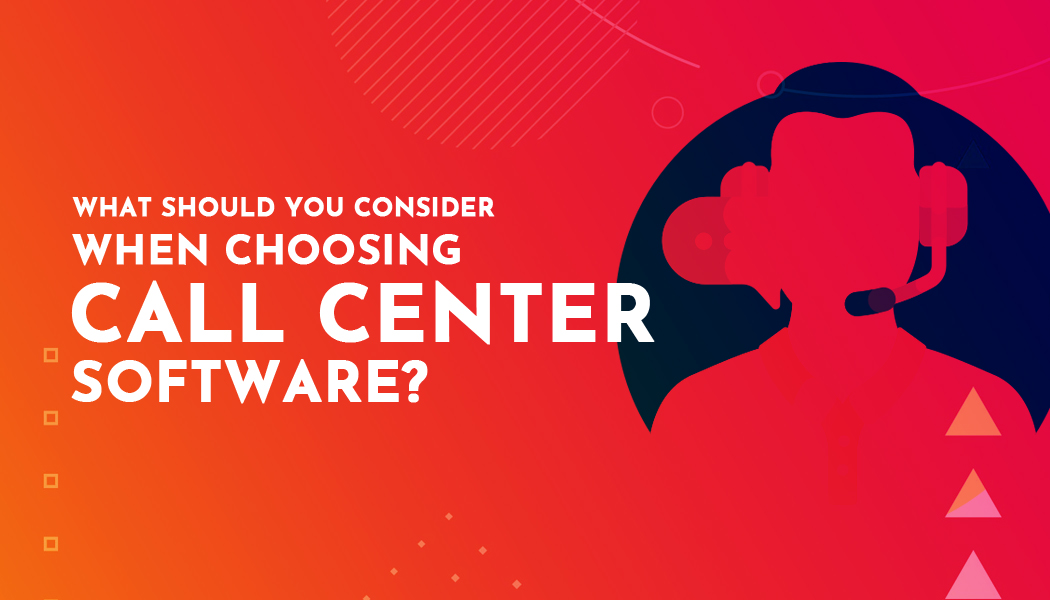What Should You Consider When Choosing Call Center Software?
Common Sense in Software Acquisition
Enterprise-level software is a substantial investment; from between 0.25% to 4% of your annual revenue. Accordingly, it’s integral to secure the right solution for your call center. Sometimes you need an enterprise-level solution, sometimes that would be overkill for your call center.
There are many angles to consider; it’s not just about buying the cheapest option that does what you need it to, or the most well-reviewed option. While budget, reviews, and testimonies do play a part in the acquisition, there’s more.
Following we’ll look into five notable aspects of call center software acquisition that definitely need to be understood in advance before any new programs are brought onto your IT network. These points should apply to most call centers regardless of size.

1. Existing Traffic and Expected Increases
How much traffic does your call center handle on a daily basis? If you’re only fielding a hundred inbound calls total, you really don’t need more than a handful of employees, and the software you use need not necessarily be robust. However, you do want to make allowance for scale-out.
If you’re fielding a hundred calls a day because the system is in its testing phase, and you’re determining what sort of software will be in use perpetually when you unveil full operations, then you may need software robust enough to handle more calls. You need to know what the expected volume increase will be after you install the software.
If, when you take the software on a test drive, it functions as intended, and you only expect marginal increases within the service capability of said software, then you’re good to go. If you’re about to go “live”, and suddenly traffic will exponentially increase, then you need a robust software solution from the start.
2. Who Will Be Using the Software, and User-Friendliness
Is the call center software you’re acquiring to be used by agents on the phones fielding calls, or is it only going to be used by tech professionals? There are different software solutions for different needs. Usually, agents have a portal through which they access customer information and make account changes. Meanwhile, supervisors have software to manage agents.
While your management personnel should have better acumen in software navigation than most of your agents or customer service representatives on the phone, this won’t always be the case. A salesperson good at inspiring a team of agents to perform well may be absolutely clueless when it comes to computer interaction. Said individual may only be effective in one area.
Accordingly, software that’s designed to be used by technicians won’t do you any favors on the call center floor. While supervisory staff has greater latitude than many agents on the floor, there’s an upper limit to consider. Assure whatever software you acquire can be easily used by all staff for optimal functionality during periods of high call volume.

3. Taking The Automated Angle Into Account
Next, you want to reduce unnecessary tasks for personnel in management, sales, customer service, or whatever defines your call center. To that end, robotic process automation, or RPA, is an absolutely excellent choice. RPA can help you distribute calls to the right departments, it can help you manage customer information, and a lot more.
This can be a game-changer for businesses relying on cold calling services, allowing agents to spend more time engaging leads and less time on repetitive admin tasks. A decentralized software “floated” via cloud becomes increasingly mainstream, so also does the quality of RPA options on the market. With a strong enough RPA option, there’s a good chance you can severely reduce personnel needs owing to more streamlined operations overall.
4. Available Customer Service From Software Providers
Something else to consider is how robust customer service solutions are for a given software suite. If you get powerful software at a bottom-dollar price, but what you’re using is impossible to interface with even for techs, and you can’t get any customer service on the phones, you’ve got a dud on your hands.
The most experienced IT professional can’t read minds, and that individual won’t be good at any software navigation automatically. They’ll have a learning curve. It will be shorter than those who aren’t familiar with tech professionals, but even in that scenario, without customer assistance from the software provider, it’ll take time to learn the idiosyncrasies of your new call center solution.
In advance, you need to know what sort of help will be available for your call center once you’ve acquired the software. A reputable company will have an entire department devoted to not only customer service but advice regarding specific aspects of software management.
If there is no available customer service with the option you’re considering, that may be a deal-breaker. Should software decide to act funky, you’re without recourse except for trial-and-error, and that may mean the substantial volumes of profitable calls are lost.

5. Existing Hardware Ability
Sometimes the issue you’re looking at is antiquated hardware. If you’re running an on-site server array that hasn’t been updated since 2017, the latest call center software may overwhelm your network. Servers tend to last between three and five years on average.
Granted, you can get a given array to remain profitably functional for a decade, but it’s going to get “buggy” soon. Not only are data thresholds stressed over time, but the capabilities of associated software are limited in comparison to developing software. About every year and a half or so, technological capabilities double in their scope.
So in five years, that’s 3.33 iterations of upgrade. In a decade, that doubles. So hardware secured in 2012 is likely more than six times less capable than that which has been produced in 2022.
Optimal Software for Optimal Operations
There’s a lot to think about as regards call center software. Provided you make an informed choice from the outset, you’ll see a return on investment.
Some key considerations to that end include the existing capabilities of the hardware you’re using, whether or not a prospective option includes customer service, what automated options are out there, who will use the software, its relative user-friendliness, and how much traffic a given software solution can handle.




